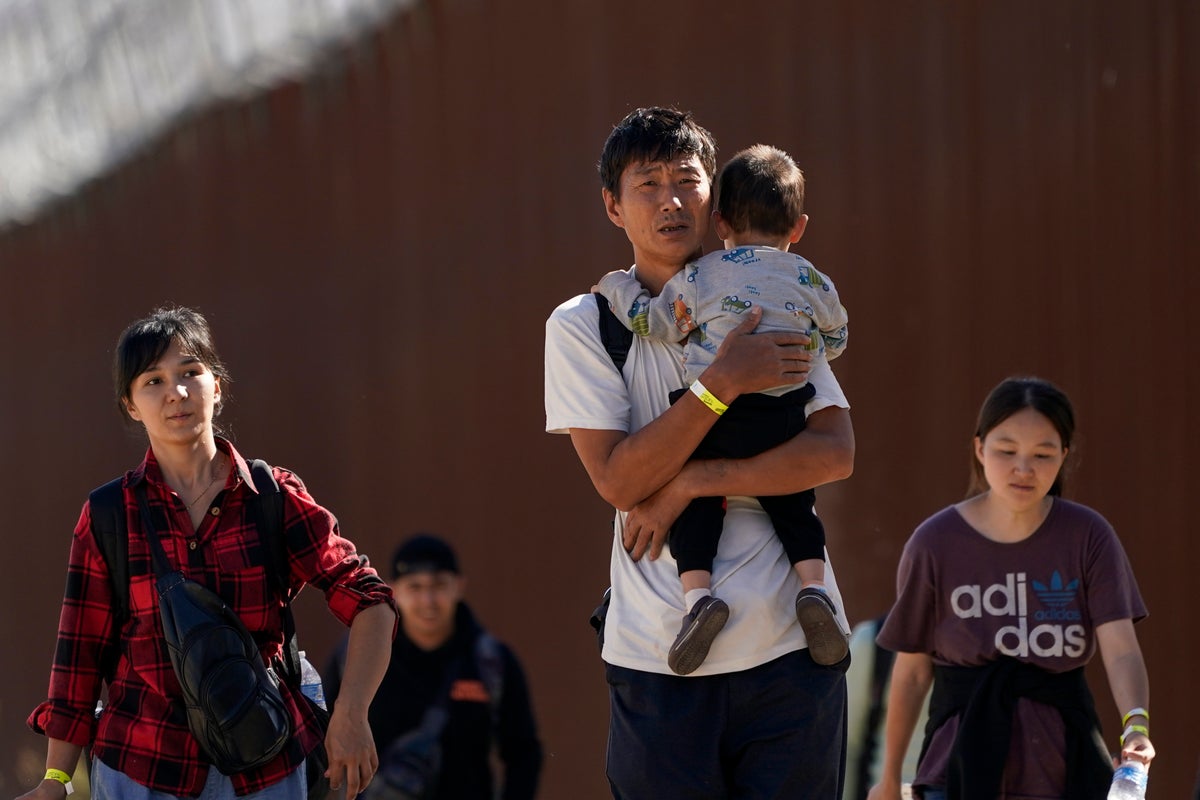
The U.S. is seeing a big increase in Chinese immigrants arriving using a relatively new and perilous route through Panama’s Darién Gap jungle, thanks in part to social media posts and videos providing step-by-step guidance.
Chinese people were the fourth-highest nationality, after Venezuelans, Ecuadorians and Haitians, crossing the Darién Gap during the first nine months of this year, according to Panamanian immigration authorities. Chinese migrants using this route fly to Ecuador and then make their way north to the U.S.-Mexico border.
Chinese migrants interviewed by The Associated Press said they are seeking to escape an increasingly repressive political climate and bleak economic prospects.
Here are some takeaways from the AP’s reporting:
HOW MANY CHINESE MIGRANTS ARE COMING THROUGH THE DARIÉN GAP?
The monthly number of Chinese migrants crossing the Darién has been rising gradually, from 913 in January to 2,588 in September. For the first nine months of this year, Panamanian immigration authorities registered 15,567 Chinese citizens crossing the Darién. By comparison, 2,005 Chinese people trekked through the jungle in 2022, and just 376 in total from 2010 to 2021.
At the U.S.-Mexico border, the Border Patrol made 22,187 arrests of Chinese people for crossing the border illegally from Mexico from January through September, nearly 13 times the same period in 2022. Arrests peaked at 4,010 in September, up 70% from August. The vast majority were single adults.
The increase comes as more people are leaving China. The United Nations has projected China will lose 310,000 people through emigration this year, compared with 120,000 in 2012.
WHY TRAVERSE THE DARIÉN?
The route is viable for Chinese immigrants because they can fly into Ecuador without a visa. From Quito, they join Latin Americans to travel through the once-impenetrable Darién and across several Central American countries before reaching the U.S. border. The journey is well-known enough it has its own name in Chinese: walk the line, or “zouxian.”
Short video platforms and messaging apps have popularized the route. They provide on-the-ground video clips and step-by-step guides from China to the U.S., including tips on what to pack, where to find guides, how to survive the jungle, which hotels to stay at, how much to bribe police in different countries and what to do when encountering U.S. immigration officers. Translation apps allow migrants to navigate through Central America on their own, even if they don’t speak Spanish or English.
WHY ARE MORE PEOPLE LEAVING CHINA?
Emigration from China began to rise significantly in 2018, when President Xi Jinping amended the constitution to scrap the presidential term limit. The pandemic and China’s COVID-19 policies, which included tight border controls, temporarily stemmed the exodus, but emigration has resumed, with China’s economy struggling to rebound and youth unemployment high.
“This wave of emigration reflects despair toward China,” said Cai Xia, editor-in-chief of the online commentary site of Yibao and a former professor at the Central Party School of the Chinese Communist Party in Beijing.
“They’ve lost hope for the future of the country,” said Cai, who now lives in the U.S. “You see among them the educated and the uneducated, white-collar workers as well as small business owners, and those from well-off families.”
This latest wave even has an internet meme, “runxue." The term, which means the study of running away, started as a way to get around censorship, using a Chinese character whose pronunciation spells like the English word “run” but means “moistening.”
“The unemployment rate is very high. People cannot find work,” said Xi Yan, a Chinese writer who came to the U.S. with her daughter in April. “For small business owners, they cannot sustain their businesses.”
WHAT HAPPENS ONCE THE MIGRANTS ARRIVE IN THE U.S.?
Those who cannot obtain a visa but travel to the U.S. by crossing the border illegally to seek asylum usually unite with relatives and friends in major cities such as Los Angeles and New York, where they will find work and establish a foothold.
Many enter the U.S. in the San Diego area. In September, 98% of U.S. border arrests of Chinese people occurred in that area. They are also part of a broader presence of migrants at the U.S.-Mexico border — Asians, South Americans and Africans — who made September the second-highest month of illegal crossings and the U.S. government’s 2023 budget year the second-highest on record.
Some migrants who enter the U.S. at San Diego wait for agents to pick them up in an area between two border walls or in remote mountains east of the city covered with shrubs and large boulders. They wait there to turn themselves in to U.S. authorities to make asylum claims.
U.S. Border Patrol agents sometimes take migrants who have been processed to a transit station in San Diego, where they can charge phones, snack, browse piles of free clothing and get travel advice.







